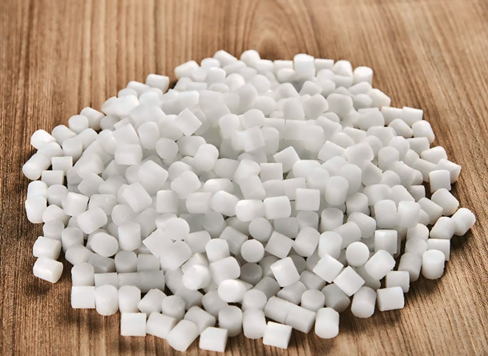Abstract
Camphor (C10H16O) is a white crystalline solid with enantiomeric forms R and S camphor. It is a terpene derived from turpentine. Alpha pinene is produced using a catalytic mechanism. Camphor is naturally obtained by steam distillation of the woods of the Cinnamomum camphora tree, often known as the camphor tree, camphor laure, or camphor wood. Camphor exhibits numerous pharmacological effects. It acts as antipyretic, antibacterial, antitumor, antioxidant, anti-inflammatory, antiviral. It can also be utilized as a skin penetration booster. Camphor has a relaxing and cooling sensation that helps to relieve discomfort.
Keywords
Cinnamomum Camphora, chemical constituent, toxicity, pharmacological action.
Introduction
Natural substances are becoming increasingly popular in medicinal treatments. Camphor, a terpene chemical, serves as an excellent example. Camphor cinnamon is sourced from trees in Japan, China, Vietnam, Asia, Africa, Sri Lanka, Australia, Canada, and the United States(1). The word camphor derives from the French world (camphre) camphor is used in India from ancient time(2). Camphor, a white, crystal-like substance with an unpleasant odour and pungent taste, is obtained from the wood of Camphor laurel (Cinnamomum camphora) and similar trees in the laurel family(3). There are two types of camphor: chemically and synthetically created karpura, which is burned during puja ceremonies and religious rituals in Indian temples for its aromatic smell. Camphoric fumes are not irritating to the eyes. As a source of essential oil for the synthesis of natural linalool, which is employed in fragrant cosmetic applications, Cinnamomum camphora is becoming more and more significant. Natural camphor derives from the Cinnamomum camphora tree and is frequently used in both a range of sweets and an ancient medicine(4). Camphor trees can reach heights of 30-40 meters and diameters of 3 meters. They normally occur at elevations between 900-2500 meters above sea level. The bark is yellow or brown and is divided vertically. The leaves feature many veins and latent buds with huge, velvety recesses(2). The plant, which thrives in Madagascar's moist woodlands, has a pleasant scent throughout. There are other names for the plant, including Chinese laurel, Shiu wood, camphor tree, and Ravintsara(5). Among its many biological qualities are antibacterial, antiviral, and antitussive actions. Camphor is a common element in modern medicine, used in rubefacients and topically applied analgesics to treat minor muscle aches and pains. It has also been claimed that intramuscular injections of camphor have been used to ease pain from breast engorgement. As an internal stimulant and carminative, it has also been used topically as an anti-infective and anti-pruritic(6).
Biosynthesis of camphor:
During the biosynthesis process, geranyl pyrophosphate is converted to camphor by cycling linaloyl pyrophosphate into bornyl pyrophosphate, which is subsequently hydrolysed to produce borneol and oxidized to produce camphor. Geranyl pyrophosphate biosynthesis is the process that yields camphor(7). The C5 precursor is typically formed via two different routes. The first is the cytoplasmic mevalonate pathway (MVA); the second is the plastid-based 2-C-methyl-D-erythritol-4-phosphate pathway (MEP), also known as the deoxylulose-5-phosphate pathway (DXP). The IPP produced by the two routes is partially transformed into the double-bonded isomer DMPAA by isoprenyl diphosphate isomerase. The building blocks for the synthesis of all terpenoids found in nature are IPP and DMAPP. Direct precursors of geraniol diphosphate (GPP), farnesyl diphosphate (FPP), and geraniol diphosphate are produced in plants by varying ratios of IPP and DAMPP reactants(8).


Chemical constituent of camphor:
These fragmentary chemicals are derived from Cinnamomum camphora and include menthol, thymol, salicylic acid, phenol, and naphthol. The primary active ingredients of Cinnamomum camphora are campher, campherol, cineol, camphene, dipentene, terpineol, candinene, safrole, camphorace, laurolitsine, and reticuline. The chemical cinnamon aldehyde is what gives their barks their pungent scent. The leaf gives off a strong smell since it contains eugenol and isoeugenol. Additionally, it contains camphor, an active substance that gives it its general characteristics. The entire plant of Cinnamomum camphora has lignans (such as secoisososolariciresinol dimethyl ether and kusunokiol), camphor, safrole, linalool, eugenol, and terpenol in addition to a volatile oil. Safrole, which is present in the plant, has ability to cause cancer. The leaf oil contains citronellal (2.4%) and linalool (94.9%) naturally(9).
Pharmacological action
Anti pyretic activity:
Four sets of six mice each weighing 18–23 g were subjected to antipyretic activity using a brewer's yeast (Saccharomyces cerevisiae) induced pyrexia model. After the mice were restrained, a thermometer was placed into the rectum to take their baseline body temperature. Except for the control group, all experimental mice were induced by subcutaneous injection of a 20% suspension of Brewer's yeast (Saccharomyces cerevisiae) (10 mL/kg b.wt.). At the nineteenth hour, the rectal temperature was once more taken. The standard group received an oral dose of 0.1 mL/10g body weight of HSEO (Site-I and Site-II) at specific dose levels of 50 mg/kg and 100 mg/kg body weight, along with 33 mg/kg body weight of paracetamol, an antipyretic medication, right away. Only 0.2 mL of regular saline water was given to the control group. Up to three hours, the rectal temperature was once more taken at hourly intervals. The entire drop in temperature to the normal level was taken as 100% for calculating the percentage decrease in rectal temperature(10)
Anti-bacterial:
The utilization of plant chemicals for their antibacterial action has steadily grown around the world, and plants have long been a useful source of natural goods for preserving human health. Several studies have demonstrated that essential oils from a variety of species, with camphor as one of its main constituents, have antibacterial properties(6). The excessive and inappropriate use of antibiotics is one of the main issues facing human health. Furthermore, it is alarming that bacteria resistant to antibiotics are spreading so quickly. It is known that camphora has antifungal, antiviral, and antibiotic properties when used as an herbal remedy. It explained that there is proof that the essential oil of camphora had medicinal qualities, such as antibacterial actions(11).
Antitumor activity:
Cinnamomum extracts and C. longepaniculatum essential oil include polyphenols and flavonoids that have been linked to anticancer properties. The study examined the impact of ethanol extracts from C. camphora leaves on human lung cancer 95-D cells, oral epidermal carcinoma KB cells, and liver cancer HepG2 cells. Furthermore, pertinent research has shown that keratinocyte-derived cancers can be made to regress by using camphor white oil (CWO), which is made by steam distilling the wood of the camphor laurel tree (C. camphora), and its derivatives. ?-pinene and d, l-limonene were shown to be active chemicals that induce tumour regression when the components of CWO were examined using GC-MS. Still, more research is required to determine if these elements work together or independently on the molecular pathway(8).
Antioxidant activity:
The antioxidant capacity of CCEO rises with the concentration of essential oil. According to reports, CCEO has an antioxidant impact by increasing the activities of antioxidant enzymes, which lowers the quantity of reactive oxygen-free radicals. Furthermore, an elevated level of C (8). As a potent antioxidant, camphor eliminates free radicals from your body, protecting tissue damage, liver disease, and other health issues. When applied topically, camphor acts as a rubefacient, causing localized vasodilation that provides a sense of warmth and comfort. This is the primary mode of action of camphor. Camphor has antipruritic properties, produces a cooling sensation, has a modest local anaesthetic effect, and reduces itching when applied lightly to the skin. When used in modest doses, it produces a warming sensation(9).
Anti-inflammatory:
It lowers cholesterol levels and relieves muscle discomfort, pains, chest congestion, and rheumatism. Camphor oil has anti-inflammatory qualities and is commonly used in vapour rubs, liniments, and balms(9). Acute inflammation is characterised by swelling, heat, redness, and pain is an important defence mechanism against invading pathogens. The mediators that arise from the cyclooxygenase (COX) cascade and the role of biologically active prostaglandins in the inflammatory process and body homeostasis have been extensively studied. Cyclooxygenase inhibitors prevent prostaglandin biosynthesis and are effective anti-inflammatory compounds that are reduced the level of prostaglandins and cardinal signs of inflammation(12).
Antiviral:
The prevalence of viral illnesses is rising globally, and researchers are working hard to find antivirals that are both more effective and less harmful than those that are currently on the market. It is well recognized that aromatic herbs, particularly their essential oils, have antiviral qualities(6). The second most effective herbal remedy utilized during the 2005 SARS-CoV outbreak in China was an alcoholic extract of sweet wormwood (Artemisia annua). The Malagasy Institute of Applied Research has utilized the plant parts to make a tonic called COVID-19 Organics, which is meant to help patients with COVID-19 by boosting their immune. Clinical trials for this therapeutic plant have not yet been carried out. Sweet wormwood (Artemisia annua) aerial portions include essential oil that is composed of camphor (44%), germacrene D (16%), trans-pinocarveol (11%), ?-selinene (9%), ?-caryophyllene (9%), and artemisia ketone (3%). Antiviral qualities are known to be present in aromatic plants, particularly in their essential oils(4).
Camphor toxicity
There is no recognized mechanism for how camphor causes toxicity. Within minutes after consumption, measurable blood concentrations are discovered, indicating fast absorption from the gastrointestinal system. Within five to fifteen minutes, patients frequently report nausea, vomiting, abdominal pain, and irritation of the mucous membranes. Soon after intake, generalized tonic-clonic convulsions may happen, which is frequently the first indicate on of serious poisoning(13).
Prevention of toxicity:
The nature of camphor is extremely poisonous, and this has been verified. Rather than camphor's inherent toxicity, one of the main problems is that its toxicity to humans is directly tied to the availability of drugs containing camphor as safe medications. Higher oral doses of 3.5 g of camphor have the potential to be fatal(14).
In 1983, the Food and Drug Administration decided that camphorated oil could no longer be sold over the counter (OTC). Because of this decision and advancements in medical care for patients poisoned with camphor, fatal poisoning cases are now uncommon. OTC products containing camphor are currently limited to 11?mphor, though cases of severe toxicity and convulsions are still reported to occur with lower concentration products that are still available. In addition to pharmaceutical products containing camphor, there are imported, non-FDA-approved, ethnic remedies sold in the United States that contain camphor in amounts higher than the FDA's 11% limit(13).
CONCLUSION:
Since it has a long history of use as an antiseptic, antipruritic, rubefacient, abortifacient, aphrodisiac, contraceptive, and lactation suppressant, camphor is widely known as a primary ingredient in topical home remedies for a variety of symptoms. Numerous scientific investigations have been conducted on this compound's mechanism of action and how it is metabolized in both human and animal bodies over the years.
REFERENCES
- Duda-Madej A, Viscardi S, Grabarczyk M, Topola E, Koz?owska J, M?czka W, et al. Is Camphor the Future in Supporting Therapy for Skin Infections? Vol. 17, Pharmaceuticals. Multidisciplinary Digital Publishing Institute (MDPI); 2024.
- Lee SH, Kim DS, Park SH, Park H. Phytochemistry and Applications of Cinnamomum camphora Essential Oils. Vol. 27, Molecules. MDPI; 2022.
- Hamidpour R, Hamidpour S, Hamidpour M, Shahlari M. IJCRI 201 2;():****. Camphor (Cinnamomum camphora), a traditional remedy with the history of treating several diseases. IJCRI-International J Case Reports Images [Internet]. 201(2). Available from: www.ijcasereportsandimages.com
- Malabadi RB, Kolkar KP, Meti NT, Chalannavar RK. AN AGE OLD BOTANICAL WEAPON FOR HERBAL THERAPY: CAMPHOR TREE, CINNAMOMUM CAMPHORA. Int J Innov Sci Res Rev [Internet]. 2021;03:1518–23. Available from: http://www.journalijisr.com
- Cheribot Cherif M, Boughendjioua H, Sakhraoui N. Chemical composition of essential oil from the leaves of Cinnamomum camphora (L.) J. Presl. J Phytol. 2024 Jul 1;16:94–7.
- Chen W, Vermaak I, Viljoen A. Camphor-A fumigant during the black death and a coveted fragrant wood in ancient egypt and babylon-A review. Vol. 18, Molecules. 2013. p. 5434–54.
- Study Of Camphor (Cinnamomum camphora) [Internet]. 2023. Available from: www.ijcrt.org
- Du Y, Zhou H, Yang L, Jiang L, Chen D, Qiu D, et al. Advances in Biosynthesis and Pharmacological Effects of Cinnamomum camphora (L.) Presl Essential Oil. Vol. 13, Forests. MDPI; 2022.
- Mishra R, Dwivedi B. Cinnamomum camphora: a long history for epidemics control. TMR Integr Med. 2021;5(0):e21031.
- Rawat A, Rawat M, Prakash O, Kumar R, Punetha H, Rawat DS. Comparative study on eucalyptol and camphor rich essential oils from rhizomes of Hedychium spicatum Sm. and their pharmacological, antioxidant and antifungal activities. An Acad Bras Cienc. 2022;94(3).
- Fazmiya MJA, Sultana A, Rahman K, Heyat MB Bin, Sumbul, Akhtar F, et al. Current Insights on Bioactive Molecules, Antioxidant, Anti-Inflammatory, and Other Pharmacological Activities of Cinnamomum camphora Linn. Vol. 2022, Oxidative Medicine and Cellular Longevity. Hindawi Limited; 2022.
- Silva-Filho SE, Silva-Comar FM de S, Wiirzler LAM, do Pinho RJ, Grespan R, Bersani-Amado CA, et al. Effect of camphor on the behavior of leukocytes in vitro and in vivo in acute inflammatory response. Trop J Pharm Res. 2014 Dec 1;13(12):2031–7.
- Manoguerra A, Erdman A, Wax P, Nelson L, Martin Caravati E, Cobaugh D, et al. Camphor poisoning: An evidence-based practice guideline for out-of-hospital management. Vol. 44, Clinical Toxicology. 2006. p. 357–70.
- Malabadi RB, Kolkar KP, Meti NT, Chalannavar RK. Camphor tree, cinnamomum camphora (L.); ethnobotany and pharmacological updates. Biomed. 2021;41(2):181–4.


 Jayendra Rane*
Jayendra Rane*
 Aman Yadav
Aman Yadav
 Rohit Tiwari
Rohit Tiwari


 10.5281/zenodo.14778771
10.5281/zenodo.14778771